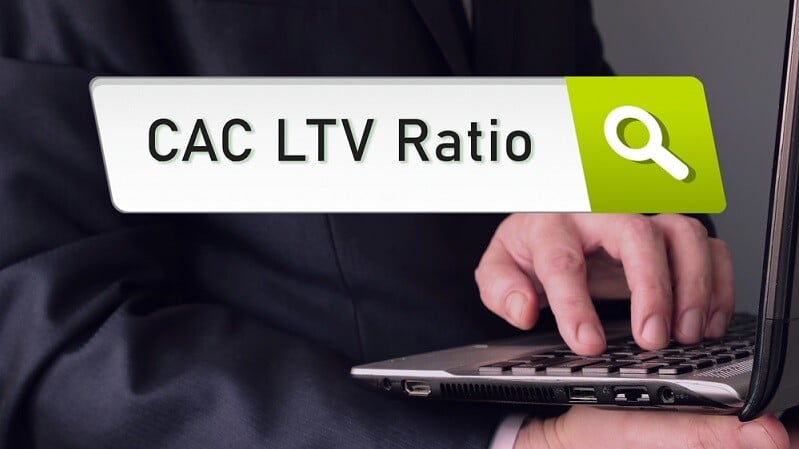If you’re a small business owner (or a consumer, for that matter) you’ve likely seen inflation in the news—and you’ve almost certainly felt its effects.
In June 2022, inflation on all items over a 12-month period reached 9.1%—the highest it’s been since 1981. In practical terms, that means that the buying power of your money became almost 10% weaker.
Although the rate of inflation has slowed somewhat since then, the reality is that we’re still in an inflationary environment. If you’re a small business owner, you likely have questions about what to do. In this short guide, we’re answering some of these questions by diving deeper into the topics of our webinar: What causes inflation, how inflation affects small businesses, and the steps you can take to counter it.
What causes inflation?
At its core, inflation is a general rise in prices. But what causes this overall increase in the cost of goods and services?
Generally speaking, inflation can soar for various reasons, including:
- An increase in demand for products and services (known as demand-pull inflation)
- An increase in production costs (known as cost-push inflation)
- An increase in the amount of money that consumers have to spend
- Currency devaluation
Several of these factors could apply to this current burst of inflation. Due to the long-lasting effects of the COVID-19 pandemic, production and shipping costs have skyrocketed in many industries as supply chains suffer. At the same time, economic uncertainty led the many people who remained employed to purchase less and stockpile their money.
Regardless of what caused the inflation we’re seeing today, it’s important to note that inflation is nothing new. It’s a natural part of the economic cycle. Inflation is always happening—in fact, the U.S. Federal Reserve aims for an average inflation rate of 2% per year.
However, when the rate goes above this benchmark, everyone from consumers to small business owners feels the effects.
5 ways that inflation impacts small businesses
Inflation touches everyone, but entrepreneurs can be some of the hardest hit.
So, how does inflation affect small businesses? Here are five impacts you may notice.
1. Costs go up
For small business owners, the cost of doing business rises during inflationary periods. Everything from the gas used to transport supplies to the supplies themselves becomes more expensive.
A side effect of rising prices is a lack of inventory. With the cost of finished goods, raw materials, and labor on the rise, local businesses may find it harder to keep products in stock.
2. Prices go up, too
As small businesses see their overhead costs increase, they often raise the prices of their products or services to stay profitable.
For example, Long Beach Fish Grill in Long Beach, CA, has switched to charging “market price” for products as costs continue to increase. And they’re far from the only ones to raise prices to account for soaring costs.
According to Forbes, 80% of small business owners have increased their prices during this period of high inflation. Nova Asset Management, which manages over 6,000 properties in Houston, TX, also raised rent prices to cover increasing wages, property taxes, and insurance and maintenance costs.
Essentially, small businesses often pass the rising costs of business to their customers. If they don’t, they risk going under due to the smaller profit margin. However, if you are transparent about this, you build trust with your customers and may find they are even more willing to support you.
3. Consumers shy away from spending
Because the price of goods and services has gone up while wages have remained largely the same, consumer spending on non-essential items has likely gone down. Unless your small business sells food, medicine, gasoline, or other must-haves, you may have noticed a decline in sales.
4. Businesses cut expenses
With customers hesitant to spend, businesses may bring in less revenue overall. A drop in revenue can cause small business owners to look for cost-cutting measures, such as:
- Laying off staff – Even cutting one or two employees from the payroll can save thousands in expenses. However, with less help, small business owners may end up working longer hours.
- Delaying upgrades or improvements – When money is tight, upgrades to facilities, equipment, and branding—whether essential or nice-to-have—can fall by the wayside. These delays can stunt a small business’ growth or, in rare cases, lead to unsafe environments.
- Modifying product or service offerings – Another way small businesses cut back on costs is by offering fewer products or services. Alternatively, they may alter existing offerings; for example, an esthetician might switch to a more affordable brand of nail polish to save money in the long run.
5. Workers seek out higher wages
Finally, as the cost of living rises alongside inflation, workers need higher wages to maintain their quality of life. However, with small businesses seeing slimmer profit margins and higher overhead costs, they may not have room in the budget for salary increases.
This inability to pay employees more can cause workers to quit in search of higher-paying jobs. Additionally, small businesses may struggle to find employees if they can’t keep up with the wage increases of large corporations.
How to survive inflation as a small business owner
While a prolonged period of higher-than-usual inflation may seem impossible to manage, businesses can still survive—and even thrive—in an inflationary environment. Here are a few tips for coming out on the other side unscathed.
Look for new streams of income
Inflation may put a damper on your regular operations. But as a local business owner with assets like property, equipment, inventory, and staff, you may be able to find more creative ways to earn extra cash on the side. In other words, you may have to think outside the box.
For instance, the owner of the San Francisco bakery Butter& reacted to rising costs by starting a second business that tied in with her first. Called Pastel, the service delivered treats from Butter& and dozens of other local businesses to customers around the Bay Area.
While this solution will look different for every small business, these questions should help you think about your current operations in a new light:
- Could you use your facilities for another purpose?
- Can you repurpose dead stock?
- Could you collaborate with other nearby local businesses?
- Do you have any equipment to rent out?
- Can you monetize any other aspect of your small business?
Double up on your marketing efforts
With many local businesses cutting spending, it may seem counterintuitive to spend more on marketing. Indeed, for many, marketing is one of the first expenses to go when money is tight.
However, marketing is your ticket to increasing revenue. If you slash your advertising budget, you certainly won’t earn more money.
What’s more, some research shows that marketing during periods of economic downturn and instability is more cost-effective. Because advertising is subject to the laws of supply and demand, the cost of paid media can drop significantly when major brands slash their ad spend.
In short, you can take advantage of the inflation-related dip in paid marketing to run a successful campaign for less.
Additionally, remember that marketing doesn’t have to be expensive. There are countless no- or low-cost ways to market your small business, including:
- Updating your website with search engine optimization (SEO) best practices
- Posting on social media
- Starting a promotional email campaign
- Connecting with local consumers
- Offering promos and discounts
- Starting a blog
- Partnering with influencers or brand ambassadors
Seek out funding opportunities
As a small business owner, you may be used to doing things on your own. But you don’t have to. There are numerous funding opportunities that can help keep your local business afloat during this period of high inflation.
Depending on your situation, you may be able to receive funding from the following sources:
- U.S. Small Business Association loans -The SBA is a federal organization that champions small businesses. Along with providing advice and matching your small business with lenders, the SBA also offers guaranteed small business loan programs. If you plan to invest in real estate or equipment, you may want to look into a 504 loan. If you’re looking for day-to-day working capital, a 7(a) loan may be the better choice.
- State or local grants – States, counties, and cities often offer smaller grants for community businesses. Additionally, some organizations—especially those in arts and culture—give out industry-specific grants. Unlike small business loan programs, grants do not need to be paid back.
- Grants from other sources - Nonprofit and for-profit companies also give back to their communities through grants. For example, the Nextdoor Kind Foundation offers microgrants to small businesses and individuals to help lift up their neighborhoods.
Sit tight
Ultimately, you might be able to outlast inflation by “hunkering down for the winter,” so to speak. High inflation rates have come and gone throughout history, and this wave of inflation will eventually pass, too.
If you can afford it, you may be able to make it through this economic uncertainty simply by cutting back on expenses.
However, if your small business is also your livelihood—as it is for many entrepreneurs—patiently waiting may not be a viable option. In this case, you may want to turn to some of the more concrete actions we’ve discussed.
Together, we can overcome rising costs
When all of your bills feel bigger than they did last month, inflation can seem like a black cloud on the horizon. But there’s plenty of hope for small business owners—especially when you lean on your community.
To connect with like-minded local business owners, try Nextdoor. Once you claim your Nextdoor Business Page, you’ll be able to connect with your most important supporters, your neighbors. Share important updates to ensure your business is top of mind.
Claim your free Nextdoor Business Page and start networking today. Together, we can make it through this inflationary period.
Photography credit: iStock.com/Anchiy








